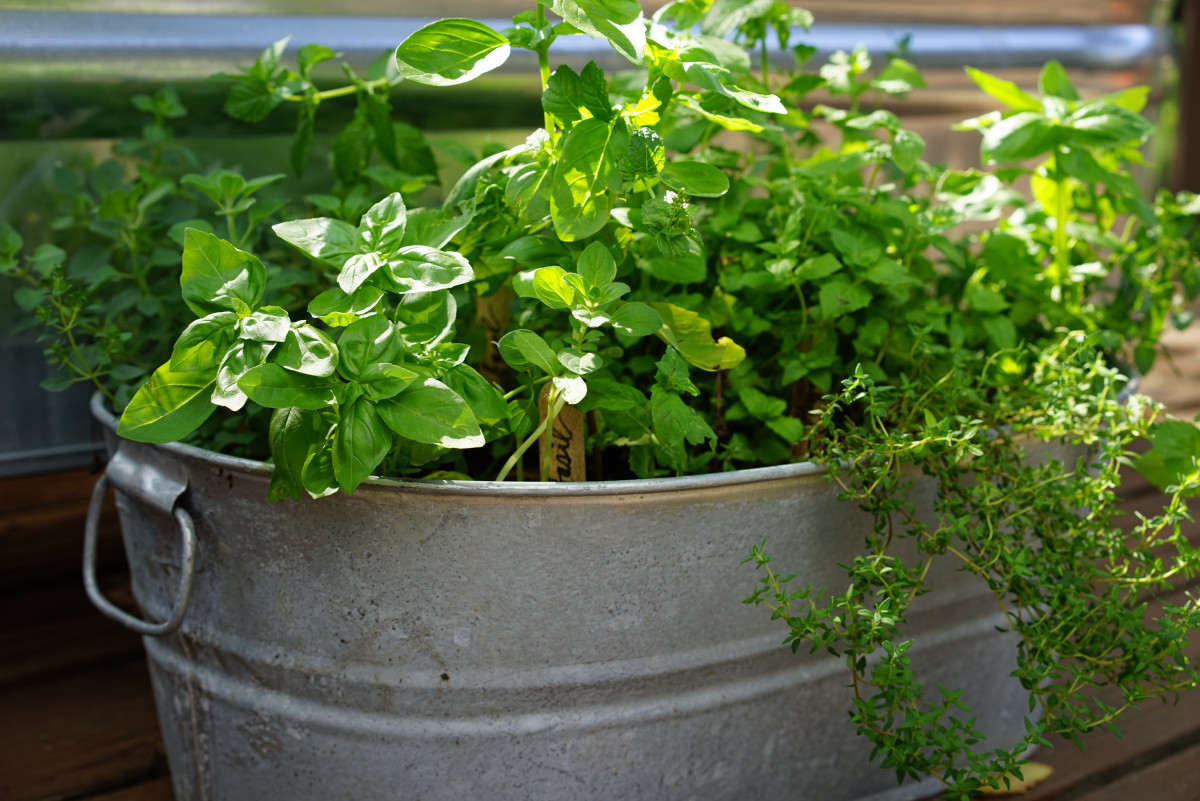 My husband and I would be at a loss in the kitchen or at the grill if we did not have fresh herbs. Fortunately we have plenty of room for a nice-sized herb garden. Such, however, is not always the case for many people. You might live in an apartment or in a house that sits on a rather small plot of land. If such is the case, you need not despair. You can grow quite a few herbs by going up with your plantings, and I do not mean hanging plants.
My husband and I would be at a loss in the kitchen or at the grill if we did not have fresh herbs. Fortunately we have plenty of room for a nice-sized herb garden. Such, however, is not always the case for many people. You might live in an apartment or in a house that sits on a rather small plot of land. If such is the case, you need not despair. You can grow quite a few herbs by going up with your plantings, and I do not mean hanging plants.
You will need a small area that gets a decent amount of sun during the day. (Most herbs originated in the Mediterranean regions of the world, where they get lots of sun and heat.) You really, however, only need a small area on your deck or porch for this method of growing herbs.
First, you will need a very large pot – about 16-20 inches in diameter and 13-17 inches tall. (You can, of course, choose larger or smaller containers.) I generally recommend plastic pots for this purpose. They are cheaper and also lighter in weight.
Filling such a large pot can take quite a bit of potting soil; however, you can save on the amount of soil you have to use by doing what I do in every container I have for my plants. Take crumbled old newspapers or even paper from your shredder and fill the pot with this at least halfway. The paper acts as lightweight filler, which will also decay over time. This means that you will not have to use as much potting soil and that the pot will be lighter, making it easier to move if necessary. (The crumpled and/or shredded paper also helps to promote drainage.) After you have filled this large pot with paper and potting soil, you need to move to the next pot.
Your second pot should be a bit smaller than the first. This pot is going to be placed in the middle of the first; therefore, you want to have enough room around the base of the second pot to plant herbs in the first. Fill this pot in the same way that you did the first. You can then add a third pot on top of the second. In fact, you can build up your pots as tall as you like, using as many different pots as you want. Just make sure that the edifice is sturdy.
Once you have built your castle of pots, you can start planting your herbs. I like to use a lot of perennial herbs, such as thyme, oregano, sage, and chives. You can, however, mix perennials and such annuals as basil and biennials such as parsley. You want to make sure, though, that you put herbs that grow tall or tend to spread quite a bit in your larger pots near the bottom of your structure and the shorter growing herbs, such as thyme, near the top. (You do not want your herb garden to be too top-heavy.) Also, in the larger pot at the bottom in particular, you do not necessarily have to plant just one type of herb. You can plant several different herbs around the base of the second pot if you so choose. In fact, there are really no limits on how many or what types of herbs you plant. You do want to make sure that the herbs are compatible in terms of watering conditions – most culinary herbs are – and in terms of light – again, most culinary herbs are. One note: When you water the very top pot, the water will most likely seep into the pots below. An easy way to find out if the pots below are receiving enough water is to simply stick your finger into the soil. If it is wet, they do not need any more water. If the soil is dry, water. [For problems that you might encounter with container gardening, see the following articles: Watering Houseplants: Identifying Problems and Houseplants: 5 Common Problems and Their Solutions.] I would also recommend that you mulch your herbs with a coarse brown sand. (Herbs like that, plus the sand helps the soil to retain its moisture.) Remember, too, that container plants need regular fertilizing. [See Houseplants: Understanding Fertilizer.]
